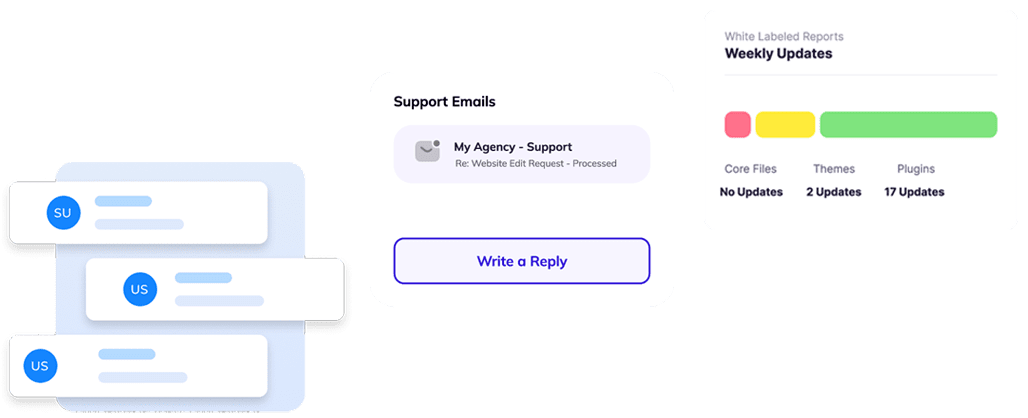Hey, it’s no secret – we’re living in a technology-driven world, and small businesses must adapt to thrive. This article will guide you through understanding the importance of having a mobile-friendly website for your small business. You’ll discover why accommodating the rise in mobile usage is essential, how this could affect your search engine rankings, and more importantly, why not doing so could leave you trailing behind your competitors. We’ll also provide practical tips on how you can make your website mobile-ready and enhance your business success. So grab a cup of coffee, and let’s dive in!
So, what is a mobile-friendly website?
A mobile-friendly website is designed to display correctly on smaller screens such as smartphones and tablets. It should have easy-to-read text, no horizontal scrolling, intuitive navigation, and have elements properly organized to fit nicely on the screen. This ensures optimal user experience, extending your website’s accessibility beyond desktop users to those browsing on a mobile device.
Think about browsing a website on your smartphone. A mobile-friendly website is designed specifically for smaller devices like this, rather than being a shrunk-down version of the desktop site. It’s engineered to make sure everything fits perfectly on a smaller screen and operates smoothly, resulting in an optimal user experience. For example, a mobile-friendly site will have buttons and links spaced out for easy touching by thumbs, load quickly to cater to more unstable mobile internet connections, and require minimal scrolling or zooming to view the entire content well.
Let’s delve deeper with examples. Take an e-commerce store for instance. On a mobile-friendly version, the products would automatically realign to fit a vertical scroll pattern, allowing users to sift through options with simple upward or downward swipes. Moreover, product descriptions, prices and the ‘buy’ button would all be clearly viewable and clickable, without the visitor needing to zoom in or struggle with any obscured or overflowing content. It’s a simple usability tweak that holds immense value, ensuring that potential customers stay on the site and sail through to check-out without any hiccups along the way.
Similarly, consider a restaurant’s mobile-friendly website. On it, you would easily find critical information – like opening hours, menu, location, and contact details – front and center, without needing to zoom or scroll excessively. Reservations could be made via a plainly visible button positioned conveniently for thumb-access. Plus, the website would load quickly, so even users browsing on the move with potentially poor connection wouldn’t be kept waiting. Thus, a mobile-friendly site ensures that no user needs to squint, zoom, scroll awkwardly or wait longer than necessary to achieve their goal.
The Rise of Mobile Usage
You’re probably aware that mobile usage has skyrocketed in recent years. Literally, millions of people around the globe are thumbing away at their screens, engaging with digital content every single day. For small businesses, this is an opportunity that cannot be ignored.
Here’s the thing. This mobile trend has significant implications for your small business. This isn’t just about catering to the “on-the-go” lifestyle anymore, but it’s about meeting your potential customers where they already are – on their mobile devices. It’s an indispensable part of not just attracting, but retaining customer attention and driving business success.
So, what happens when your business doesn’t meet this mobile standard? You potentially miss out on a customer pool that’s growing and evolving with each passing second. Simply put, if your website isn’t mobile-friendly, you’re likely not making the most out of your online presence.
But, don’t worry. It is entirely within your grasp to harness the power of this mobile revolution. Becoming mobile-friendly enhances your customer’s overall experience, boosts your website’s search engine rankings and keeps you competitive. It’s time to commit to this mobile-centric approach for the long-term success of your business.
The Mobile Revolution: Why Small Businesses Need to Adapt
Let’s dive right into the heart of the matter: small businesses today must adapt to the mobile revolution – it’s no longer an option, but a necessity. You see, with increasing mobile usage trends, more and more customers are searching for local businesses, making orders, and posting reviews straight from their smartphones. If your business doesn’t have a mobile-friendly website, you could miss out on a significant chunk of potential customers. Plus, who would want their customers to struggle with a non-optimized website on their mobile screens when they can easily switch to your competition, with the tap of a screen right in their pockets or purses?
Boosting Visibility: How Mobile-Friendly Websites Attract More Customers
A mobile-friendly website isn’t just about aesthetics or convenience; it’s a powerful tool for attracting more customers and boosting your business’s visibility. When a visitor lands on your site and finds it easy to navigate and use, they’re more likely to stick around, browse your offerings, and ultimately convert.
If a visitor finds your site difficult to navigate on their mobile device, they’re less likely to remain on your website, which not only leads to lost business but can harm your search engine rankings too. Remember, search engines aim to deliver the best possible results to their users. As part of this, they favour websites providing a positive user experience, regardless of the device used to access them. Therefore, having a mobile-friendly website helps improve your visibility on search engine results pages (SERPs), leading to higher organic traffic and potential clientele.
Furthermore, in a world where the average consumer spends over three hours a day on mobile devices, businesses with mobile-friendly websites are at a massive advantage. You’re essentially meeting your potential customers where they’re already spending their time. This increased visibility and accessibility significantly enhance the chances of your website being discovered by potential customers, boosting your brand recognition and business growth.
Additionally, being mobile-ready opens doors to advantageous marketing strategies such as location-targeted advertising or promotions. Suppose a customer is in your area and performs a search for your product or service. In that case, a mobile-ready website increases the likelihood of your business appearing in local search results, enhancing your visibility among potential nearby customers.
Mobile-Friendly Websites and Search Rankings: The Connection
Okay, now let’s dive into the connection between a mobile-friendly website and search rankings. As a small business owner, you may wonder, what is the need to optimize a website for mobile devices? Here’s your answer: Google and other search engines nowadays prioritize mobile-friendly websites in their search results. This shift, commonly referred to as ‘Mobile-First Indexing,’ was born out of the rapid increase of mobile browsing.
So, what exactly does this mean for you? Simply put, if your website is not designed to be easily viewed and used on mobile devices, it could negatively impact your search engine rankings. A lower ranking equates to less visibility, leading to fewer visits and potentially less business. But do not worry, we are here to help you optimize your website for a seamless mobile experience, thus enabling you to stay competitive in search rankings.
Yet, this is not just about search rankings. Consider the user experience, too. A mobile-optimized website is easier to use, retaining users for longer periods, and often leading to higher conversion rates. This means more customers are more likely to purchase or engage with your business if they are pleased with their mobile browsing experience.
Let this sink in: mobile optimization is no longer just an option, but rather, an important business necessity. Now, buckle up as we present some practical tips on making your website truly mobile-friendly!
Responsive Design: The Key to a Successful Mobile-Friendly Website
When it comes to securing your place in the mobile-friendly world, responsive design is an invaluable tool. But what does ‘responsive design’ mean? In essence, it refers to a website layout that adapts or ‘responds’ to the screen size and orientation of the device it’s viewed on.
Why is this so important these days? Simply put, it makes your website look and function its best, whether viewed on a smartphone, tablet, or desktop. No zooming in to read tiny text, no awkward navigation – just a seamless, user-friendly experience that makes your customers’ lives easier.
A successful responsive design doesn’t just translate into an increase in site visits. It can also lead to higher engagement, as users are more likely to interact with a site, they find easy to use. Plus, with Google’s mobile-first indexing, a responsive site can greatly advance your search engine rankings. In a digital economy, managing to optimize these factors could decidedly improve the growth and success of your small business.
Crucially, adopting a responsive design isn’t just about being reactive to current trends; it’s about being proactive for the future. With the continuous evolution of technology and devices, a responsive website is primed to adapt – whatever comes next.
Mobile-Friendly Navigation
Let’s talk about navigation (Menu). This is the heart of creating a mobile-ready website. A smooth and easily navigable site is essential to providing an excellent user experience, keeping customers on your site, and eventually converting them into paying customers.
To put it into perspective, envision accessing a website on your mobile device that has a cluttered structure, with tiny text and buttons that are too small to click. It would be a messy experience, right? That’s where mobile-friendly navigation comes into play. It helps create a seamless user experience by ensuring that your website is easily navigable on all devices.
The main elements of mobile-friendly navigation include simplicity, clear and concise menu labels, easy-to-click elements, and the use of the ‘hamburger’ menu on mobile screens. Plus, it’s important to remember that your site should load quickly on mobile devices. A delay in page load can send impatient users away.
The advantages go beyond user satisfaction. Google loves mobile-friendly websites too. Improved site navigation will make it easier for search engine spiders to crawl your site, which can help improve your SEO rankings. Not to mention it can drastically reduce your website’s bounce rate.
But how to start? Various tools and website builders like WordPress offer mobile-friendly templates to ease the process. Choose one that offers flexibility and customization to make the mobile version of your site as user-friendly as possible. Remember, your goal is not just to make your website mobile-friendly – it’s to make it user-friendly on all devices.
Optimized Content
Optimizing content for your website is important. Why you may ask? Well, it’s simple: Google and other search engines prioritize sites that are quick to load and easy to read on smartphones. This presents a prime opportunity for your small business to rank higher in search results, which can lead to increased visibility and customer engagement.
Start with the basics: make sure your text is easily readable. Try to use short sentences and paragraphs, as well as bullet points or numbering to make your content more digestible. Remember, mobile users are often on the go, so they prefer content that can be quickly scanned and understood.
Images are also essential for engaging users, but they can be a double-edged sword. They can make your website appealing, but if they’re not optimized, they can slow down your page loading speed. Compressed and properly sized images can retain quality while not hindering your site’s performance. There are numerous free tools online that can help you achieve this balance.
Videos can be a valuable addition to your content but remember to be mindful of their size and the potential impact on your page load time.
Lastly, make use of SEO keywords, but avoid stuffing. Including relevant keywords helps search engines understand what your page is about and improves your ranking. However, excessive use of keywords can lead to penalties from search engines, so make sure to use them strategically.
To sum up, optimized content increases your chances of drawing in and keeping visitors on your mobile site, ultimately leading to greater business success. So, pay attention to the structure, readability, and SEO relevance of your content to stay competitive.
Speedy Page Load: Boosting User Experience and Engagement
Another crucial aspect of making a mobile-friendly website is ensuring that it has a fast loading speed (yes, speed matters). Slow-loading web pages not only frustrates your mobile users and potential customers but also drastically reduces your website’s bounce rate. In other words, if your page takes too long to load, your visitors are more likely to leave before even seeing what your business has to offer.
Consequently, to maintain user interest and engagement, it’s important to optimize your website’s load times. If it’s quick and responsive, you’ll keep your visitors on board, helping to foster a positive and efficient user experience. This, in turn, increases the chances of converting these visitors into customers, substantially benefiting your business.
There are various tools available to enhance your website’s loading speed. These include compressing your images, enabling browser caching reducing, HTTP requests, removing unnecessary plugins, and using website speed testing tools identify to any potential issues. Not only will these tactics help improve your user experience, but they can also boost your search rankings, as Google often rewards sites with faster load times. By incorporating fast loading speed into your mobile-friendly website strategy, you’re setting your small business up for success.
Testing and Optimization for Mobile-Friendly Websites
As a small business owner, you’re not just creating a mobile-friendly website, you’re crafting an engaging home for your brand, and that’s an ongoing process. From newly implemented features to updated content, there’s always room to improve and experiment.
But how do you measure success? And more importantly, How can you keep enhancing user experience? Well, that’s where testing and optimization come into play. They give you quantifiable feedback and target areas to make your website even more mobile-friendly.
- The Importance of A/B Testing:Imagine this: you own a popular coffee shop and you can’t decide between using a picture of your mouthwatering cappuccino or you best-selling croissant as the main banner of your mobile website. This is a common quandary and A/B testing is your answer.This powerful tool allows you to compare two versions of a webpage to see which performs better. You show half of your users a version with the cappuccino picture and the other half one with the croissant picture. The option that brings in the highest engagement, be it site visits or orders, is your winner. It’s a straightforward way to eliminate guesswork and make data-backed decisions.
- Incorporating User Feedback:
The most straightforward way to find out whether your website is mobile-friendly is by asking your users themselves. Surveys and direct feedback can provide insights that you might have missed. But remember, balance is key. Don’t bombard them with surveys, keep them short, simple, and always geared towards enhancing their mobile experience.
Future Trends in Mobile Design: What Small Business Owners Should Prepare For
As we move forward, it’s important to keep an eye on the developing trends in mobile design. Staying ahead of the curve can provide you, as a small business owner, with a competitive advantage.
One key trend is the rise of voice user interface (VUI). With many consumers now using voice-activated devices like Google Home and Amazon Alexa, businesses must consider how their website interacts with these platforms. This may involve integrating voice search keywords into your site’s content or exploring the new world of voice app development.
Another significant trend involves using augmented reality (AR) in mobile web design. AR can provide interactive, engaging experiences for users, such as virtual tours or product previews. Even though integration of AR might look intimidating, it’s worth exploring for the potential benefits it can bring to your user experience and customer engagement.
Lastly, the ‘dark mode’ design is gaining popularity fast. Not only does this design trend look sleek and modern, it’s beneficial for users browsing in low light conditions and can significantly reduce the power consumption on OLED screens. Incorporating easy toggle options for this mode could add an edge to your business’s mobile site.
Stay agile, keep pace with these developments, and don’t be afraid to experiment with new technologies and design trends. The future of mobile design is always dynamic, and staying updated could greatly help your business stand out from the crowd.
Final Thoughts
In conclusion, it’s undeniable that having a mobile-friendly website is no longer just an option for small businesses – it’s a necessity. With the growing usage of mobile devices, businesses that don’t tailor their sites for mobile usage run the risk of alienating a large portion of their potential audience, leading to missed opportunities and reduced visibility. An optimized, mobile-friendly design not only improves user experience but also boosts your search rankings, helping your business stand out in a crowded digital marketplace.
As a business owner, take heed of the practical tips outlined in this article to make your website mobile-ready. Prioritize responsiveness, speed, and simplicity in your design. Ensure that it renders effectively on various screen sizes and that your website load speed is fast. Above all, create an intuitive, easy-to-navigate website that offers value to your visitors. By doing so, you’ll drive engagement and bolster your business success in our ever-connected, mobile-centric world.













